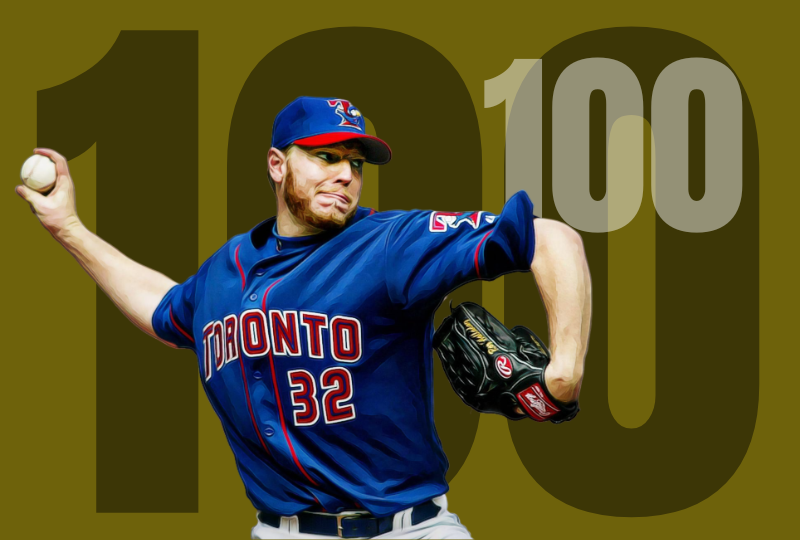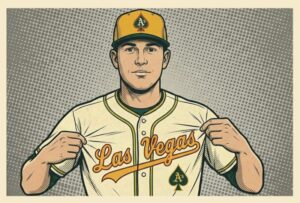While he was flummoxing hitters during his peak years, Roy Halladay mastered a cut fastball that rivaled the one Mariano Rivera used. In fact, “Doc” held his cut fastball the same way Mo did. But even though they both gripped their famous pitch the same way, baseball gripped the two men differently.
Rivera was an ideal teammate, a humble icon who approached the game with a measured, nearly emotionless countenance. Halladay was a chest-thumping warrior who delighted in the thrill of pitching in big games. While he suppressed his raw emotion on the mound, there always seemed to be a fury lying just beneath the surface for Doc Halladay.
After his playing career we learned that Halladay’s fury didn’t go away. But instead of feeding it with 1-2-3 innings and complete games, he became addicted to prescription drugs. Sadly, his demise will always be part of his story. Instead of passing in his bed with his boots off well into his ninth decade, Halladay’s untimely death at the age of 40 in a plane crash will always be a topic of conversation. But it won’t be here.
In this space let’s discuss the Halladay who finished what he started in an era when hardly anyone else was pitching complete games. Or the Halladay who went 18-7 against the mighty Yankees, including seven complete games and three shutouts. Or the Halladay who waited a dozen years to pitch in the post-season, and responded by tossing a no-hitter in his first playoff start.
You can watch a lot of baseball games and try to find a pitcher who was in the zone. You won’t find many who were more locked in than Doc was on October 6, 2010, in Philadelphia facing the Cincinnati Reds. For that one game, for that fucking playoff game, the Reds had absolutely no chance. None. The Reds were more like the Greys, for all the life they had facing Doc Halladay. That night he tossed only 104 pitches, 79 of them for strikes, many of them his trademark cutter.
You know how you know when a pitcher is bullying the hitters? When they barely put the ball in play. The last seven batters of Halladay’s playoff no-hitter failed to hit the ball farther than the infield grass near second base. This is how the Reds fared as Doc narrowed in on his no-no:
Strikeout
Strikeout
Dribbler to the mound
Strikeout
Pop fly to the second baseman
Harmless pop fly near third base in foul territory
Dribbler in front of the plate, fielded by the catcher
“The thing about it is, you know, I don’t think he threw anything down the heart of the plate,” Cincinnati manager Dusty Baker said. “Everything was on the corners and moving. I don’t know what his percentage was, but it looked like he threw 90% for first-pitch strikes Any time you do that with the stuff he has, then he can go to work on you after that.”
“It’s surreal, it really is,” Halladay said in the clubhouse after his masterpiece. “I just wanted to pitch here [Philadelphia] pitch in the postseason. To go out and have a game like that, it’s a dream come true.”
A player can’t gain entry to Cooperstown based solely on what they do in the postseason. (Don’t look at me, Jack Morris)
Yet, Halladay is most famous for two starts, each of which came on the grand stage of the playoffs. First, there was the marvelous no-hitter, but the second start was one he lost. In Game Five of the NL Division Series in 2011, Halladay spun a gem facing his former teammate and good friend, Chris Carpenter. For six years, Carpenter and Halladay shared a clubhouse in Toronto, two largely unproven pitchers learning to become rotation stalwarts.
In Game Five, Carpenter stared down his former teammate, and Roy found himself “out-doc’d”, on the wrong end of 1-0 game. Carpenter’s Cardinals bested Halladay’s Phils, but that night, it seemed more like a boxing match than team sport. Halladay and Carpenter, Doc and his protégé, pitch-for-pitch, out-for-out. But Doc was rusty in the first and allowed a scratch run to cross the plate. Yet in defeat, Halladay’s legend still grew.
It seemed as if Halladay was a legend from the beginning. In his second major league start, on the final day of the 1998 season, he nearly tossed a no-hitter. Through eight innings at the SkyDome, Halladay kept the Tigers hitless and also did not allow a walk. Only one runner had touched the bases safely, via an infield error. In the ninth, with a boisterous 38,000-plus crowd on their feet, the 21-year old retired the first two batters.
“I couldn’t get a good swing on him.” Gabe Kapler said. “His pitches were moving up, down, in, and out.”
Bobby Higginson was supposed to have the day off. It was a meaningless game. But eight-plus innings of no hits made it meaningful. Halladay didn’t know Higginson from a bat donut, and he fired a fastball down the middle of the plate. Higgy was late on it, but he got the barrel on the ball and it soared (and soared and soared) over the left field wall. The boos told the story of the lost no-no.
In the dugout that afternoon in Toronto, when the fresh-faced Halladay nearly etched his name in baseball history, was Roger Clemens. A few weeks later, Clemens would win his fifth Cy Young. But Rocket was transitioning into a six-inning pitcher. He’d win more, set records, but the torch was being passed, a new horse was in the league.
But it wasn’t easy for Doc Halladay. After nearly no-hitting the Tigers in his second big league start, his command disappeared. The Jays even briefly sent him to the minor leagues, and injuries hampered his progress. But he got better and became a stalwart, and an All-Star. One year at the All-Star Game, he bumped into Mariano Rivera and got the best tip of his career. Mo showed him how to grip the cut fastball.
“After that meeting I took a baseball and marked it with my finger and thumb placement for the cutter,” Halladay told Sports Illustrated. “If the pitch was ever off, I could go back to the baseball and hold it. I still have that ball.
“What he did for me was unbelievable. . . . After the All-Star Game that year, I pitched against the Yankees [three times] and beat them each time. I found out later that they fined Mariano in kangaroo court for me beating them with the cutter he taught me.”
Halladay only won 36 more games after his no-hitter in the 2010 playoffs, which was his second no-hitter that season. A shoulder injury and a back ailment shelved one of the greatest pitchers of the first years of the twenty-first century. He returned to the Blue Jays on a one-day contract to retire in Toronto, having never reached his dream of pitching in the World Series.







